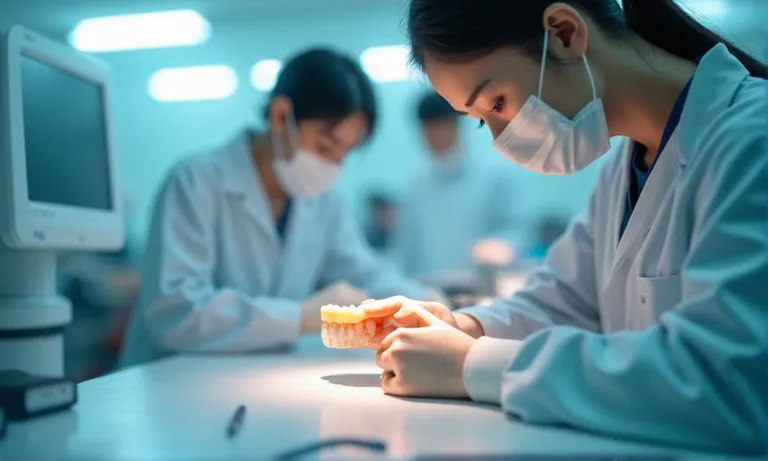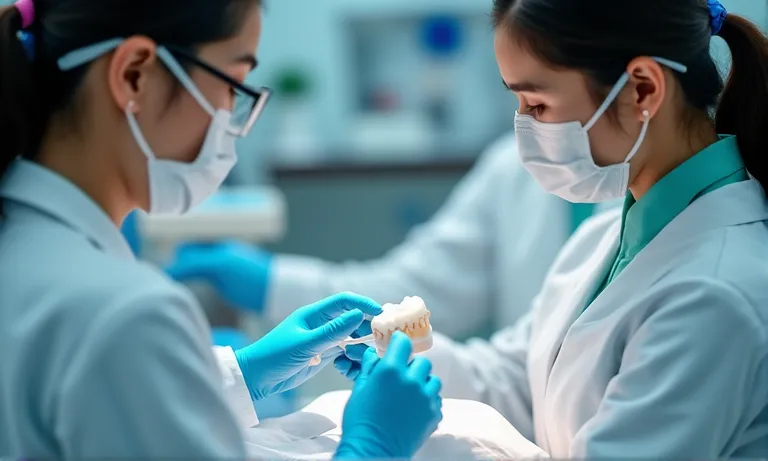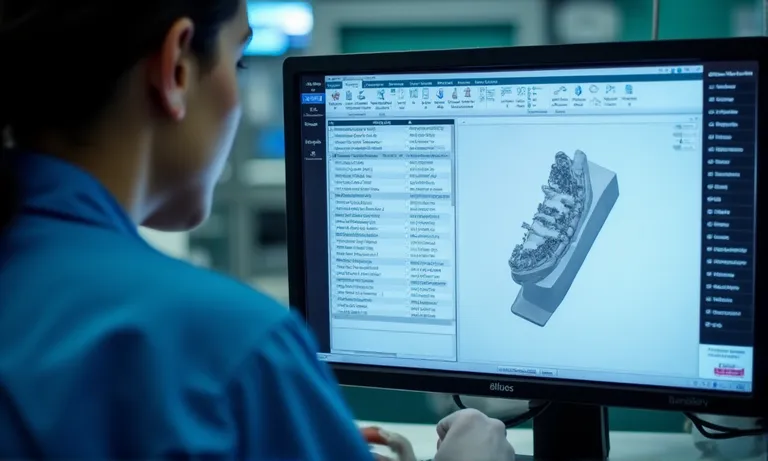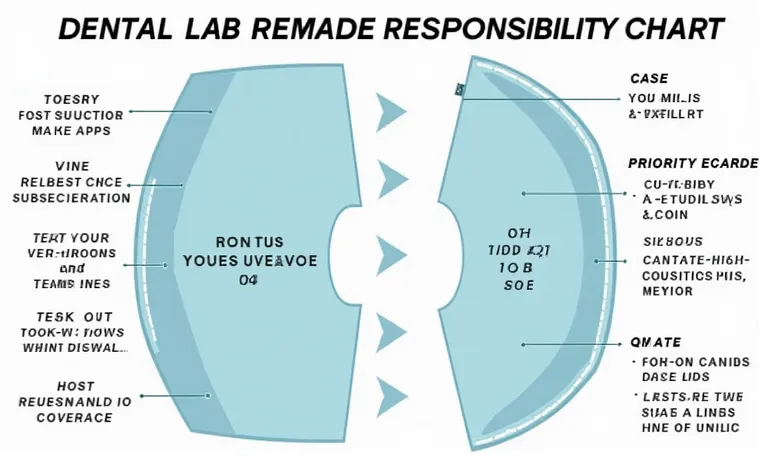High remake rates in outsourced crown & bridge cases drain clinical time and strain lab relationships.
When errors stem from unclear scans, vague prescriptions, or mismatched expectations, even skilled labs can’t deliver predictably.
By improving submission clarity, technician reviews, and shared quality tracking, clinics and labs can reduce remakes and build a smoother workflow together.
Most common causes of remakes in outsourced crown & bridge cases:
- Margin gaps, open contacts, or occlusal discrepancies
- Incomplete or incorrect digital submissions (e.g., missing STL files or prep data)
- Misalignment between clinic design intent and lab interpretation
These issues can compromise fit, function, and esthetics, increasing the likelihood of remakes.
What are the most common causes of remakes in outsourced crown & bridge cases?
Remakes often result from preventable issues—technical flaws, submission gaps, and misaligned expectations. Understanding these root causes is the first step to reducing remake rates and ensuring predictable outcomes in outsourced crown & bridge workflows.

Crown-Bridge-Remake-Causes-Technical-Submission-Mismatch
Frequent technical issues: margin gaps, open contacts, occlusion errors, shade mismatches
Technical quality flaws are a top reason for case rejection:
- Open margins: gaps at the crown edge causing poor sealing
- Tight or open contacts: poor interproximal fit due to design oversight
- Occlusal discrepancies: high or low spots that disrupt bite balance
- Shade mismatch: lab selects wrong tone due to ambiguous instructions
- Connector weakness: especially in long-span bridges under stress
These errors often stem from design or milling oversights and can be controlled with a structured QA flow.
Submission mistakes: incomplete STL files, missing prep data, unclear prescriptions
Incomplete or unclear inputs derail even the best technical teams:
- Unclear margin lines: poor scan data or undefined prep edge
- Occlusal clearance issues: prep too shallow for material thickness
- Missing opposing model: lab unable to check bite registration
- Wrong scanbody or implant platform info: leads to misfit
- No material or shade selection: forces lab to guess
These mistakes are easily avoidable with checklist-based submission protocols.
Misalignment in expectations: design intent vs. lab interpretation
Misunderstandings lead to discrepancies even when data is correct:
- Unspecified esthetic preferences: lab applies default contouring
- Ambiguous connector style: strength vs. appearance trade-offs misread
- Undocumented implant prosthetic plan: mismatch in retention type or emergence
- Clinician expects copy of previous case: but no reference provided
Alignment starts with communication—not assumptions.
✅ Remakes are often caused by submission or expectation mismatches – TRUE
Most remakes result from communication breakdowns, not just technical faults.
❌ All remakes are due to lab execution errors – FALSE
Upstream data quality and unclear case intent contribute significantly to remake risk.
How can proper file submission and documentation reduce remake risks?
Well-prepared digital submissions significantly reduce remake risk by enabling the lab to interpret the case accurately and manufacture precisely. Clear STL data , complete prescriptions, and supporting visuals minimize guesswork and enhance consistency in crown & bridge restorations.

Dental-Lab-STL-Submission-Guidelines-and-Documentation
STL checklist: margin clarity, prep depth, occlusal clearance
When evaluating STL files for lab readiness, labs check for:
- Well-defined margin line: sharp, continuous, and not obscured
- Sufficient prep depth: allows material-specific minimum thickness
- No undercuts or sharp angles: ensures smooth milling
- Proper occlusal clearance: prevents high contacts
- Correct file orientation and arch labeling: upper/lower, left/right
Consistent STL quality forms the technical base for lab design accuracy.
Case prescriptions: clear material, shade, connector & finish line instructions
A structured prescription reduces interpretation risk:
- Material choice: zirconia, E.max, PFM, etc.
- Shade guide selection: include system and custom notes if needed
- Connector preference: monolithic, layered, anatomic shapes
- Finish line type: chamfer, shoulder, knife edge
- Special considerations: occlusal clearance limitations, non-standard emergence
This prevents misinterpretation and ensures design aligns with clinician intent.
Supporting visuals: annotated photos, opposing models, design references
Complementary files provide clinical context that data alone can’t capture:
- Intraoral photos: to confirm margin position and tissue color
- Opposing model scans: ensure bite alignment
- Bite registration or CR indicators: guide occlusal harmony
- Annotated designs or drawings: mark problem zones or reference shapes
- Historical case samples: replicate proven restorations
Together, these inputs improve lab decision-making and execution precision.
Proper submission isn’t about volume—it’s about clarity. Well-prepared cases reduce remake risk, turnaround time, and chairside adjustments. Download our STL submission and prescription checklist to ensure your next crown & bridge case starts with the right data.
What role does technician review play in preventing errors before production?
Technician review acts as a safeguard between file submission and case production. This internal QA checkpoint helps catch inconsistencies, unclear margins, or problematic occlusion before any crown or bridge is milled—reducing remakes and improving delivery reliability. Studies have shown that technician assessment of preparation quality significantly correlates with clinical fit outcomes, highlighting its value as a lab-level QA step.

Dental-Technician-Case-Review-Checklist-and-QC-Workflow
Internal review checklist before CAD and milling
Before any case moves into design or production, experienced technicians conduct a technical review:
- Margin verification: Is it sharp, clean, and continuous?
- Prep analysis: Are depths and angles suitable for chosen material?
- Opposing model check: Is the occlusal relationship accurate and stable?
- File integrity: Are scan files complete, labeled, and correctly oriented?
- Prescription cross-check: Are all required details provided?
These steps allow early correction requests and avoid wasted production time.
Detecting clinical ambiguity or inconsistent bite records
Trained technicians can identify red flags often missed in scan uploads:
- Floating contacts: bite doesn’t match opposing model
- Implant case without platform data: missing scanbody info
- Margin line suddenly vanishes: tissue interference or prep angle too steep
- Shade tab visible but unreferenced: missing shade code
- Contradictory instructions: material vs. prep depth mismatch
Technician insight helps interpret unclear inputs and flag before design begins.
Technician-clinic communication on complex bridge or implant cases
When data isn’t enough, proactive labs initiate clarification:
- Direct message via email or portal: highlight specific questions
- Annotated screenshots: show margin concerns or connector risks
- Design mockups: suggest modifications before proceeding
- Multi-case tracking: link back to previous outcomes to inform adjustments
- Escalation to lab coordinator: when multiple input issues conflict
This two-way loop minimizes rework and builds trust.
Technician-led case screening isn’t an optional extra—it’s a structural defense against remakes. Their input bridges the gap between clinical intent and manufacturing logic, keeping cases accurate from the start.
How can labs and clinics build a data-based quality feedback loop?
A structured quality feedback loop allows both the clinic and the lab to reduce remake rates, detect recurring issues, and improve overall case outcomes. By tagging errors, tracking trends, and sharing notes across teams, quality assurance programs become a continuous process—not just a reactive fix.

Dental-Lab-Quality-Feedback-Loop-Dashboard-and-Remake-Tracking
Implementing remake tagging and root cause analysis (RCA)
- Case return categorization: each remake is labeled with a cause (e.g. margin issue, open contact)
- Source identification: system, technician, or input-related cause is marked
- Visual annotation: uploaded photos and screenshots explain issues
- Trend comparison: repeat causes across time or clinic identified
- Team review loop: monthly review meetings between QA and production leaders
These steps turn isolated errors into actionable insights.
Monthly QA summaries and remake trend reports
Consistent QA reporting helps customers and internal teams detect patterns:
- Remake percentage by case type: e.g. full arch vs. single crown
- Root cause distribution: highlight most frequent failure points
- Clinician-side vs. lab-side issue ratio: track responsibility breakdown
- Before/after comparisons: measure progress after adjustments
- Improvement actions linked to data: SOP updates, technician training
This makes performance transparent and data-driven.
Shared technician notes and case result logs
For continuous learning, case feedback must be visible to the people doing the work:
- Linked technician name: allows tracking performance and experience level
- Delivery outcome tagging: successful, adjusted, remake
- Cross-case analysis: similar case types, same client, different results
- Shared access with clinics: fosters trust and collaboration
- Follow-up comments: technicians and clinicians log post-case feedback
It transforms each case from a one-off to part of a shared learning process.
✅ Feedback loops reduce remake risk over time – TRUE
A structured data loop identifies patterns early and builds consistency into production.
❌ Remakes are isolated events that don’t require trend analysis – FALSE
Ignoring remake trends can lead to persistent, undetected issues that affect quality and trust.
What remake accountability standards should a lab follow?
Clear remake accountability standards establish trust between clinics and labs by defining when a remake is accepted, who bears the cost, and how quickly the issue will be resolved. A transparent remake policy reduces friction and builds confidence in long-term collaboration.

Dental-Lab-Remake-Policy-Responsibility-and-Resolution-Flow
Defined remake scenarios and acceptance rules
Labs should define acceptable remake conditions up front:
- Lab-side technical error: wrong shade, fit issue, poor contour
- Production deviation: not following written instructions
- Material or structural failure: during delivery or due to underbuild
- Shipping damage: depending on agreement and incoterms
- Excluded remakes: e.g. prep or scan issues, vague prescriptions, esthetic dissatisfaction without reference
A clearly defined remake scope avoids confusion during disputes.
Cost responsibility: when labs vs. clinics cover remake efforts
Responsibility should align with cause:
- Lab covers: confirmed technical errors, failure to follow instructions
- Clinic covers: inaccurate scans, vague specs, incorrect bite registration
- Shared cost: when root cause is unclear or case was highly complex
- Redelivery terms: whether lab covers remake + shipping, or remake only
- Documentation protocol: remake requests should include evidence—photos, models, feedback notes
This clarity saves both parties time and negotiation.
Turnaround priority and escalation process for remake cases
Timely remake handling is as important as responsibility:
- Initial review: lab reviews remake request within 1 business day
- Evidence review: file comparison and photo validation
- Remake approval or clarification request
- Priority scheduling: remake case moves to urgent queue
- Escalation path: if unresolved within agreed timeframe, contact designated coordinator or manager
Speed and ownership prevent frustration on both ends.
A mature remake policy is not just a repair protocol—it’s a trust mechanism. Download our lab-side vs. clinic-side remake responsibility checklist to align expectations and minimize avoidable conflict.
Conclusion
Reducing remake rates in outsourced crown & bridge workflows requires more than technical accuracy—it calls for aligned expectations, structured submissions, and a shared commitment to quality. At Raytops Dental Lab, we focus on helping clinics avoid preventable errors by embedding support mechanisms throughout the case lifecycle.
- Predictable outcomes start with identifying the core causes of crown & bridge remakes such as margin flaws, data gaps, and mismatched design expectations.
- Following a consistent STL file and documentation checklist helps ensure the lab receives complete and interpretable data to begin each case.
- An internal technician review step before production allows labs to catch incomplete inputs, ambiguous bite records, or unclear margins before errors occur.
- Clinics benefit from a shared data-based quality feedback loop that tags remake causes, tracks trends, and fosters transparent, continuous improvement.
- A clear remake policy and accountability framework defines when a case qualifies for remake, who bears responsibility, and how turnaround is prioritized.
To reinforce these safeguards in your daily case flow, contact Raytops Dental Lab and explore how our remake prevention protocols support your clinic’s efficiency.


